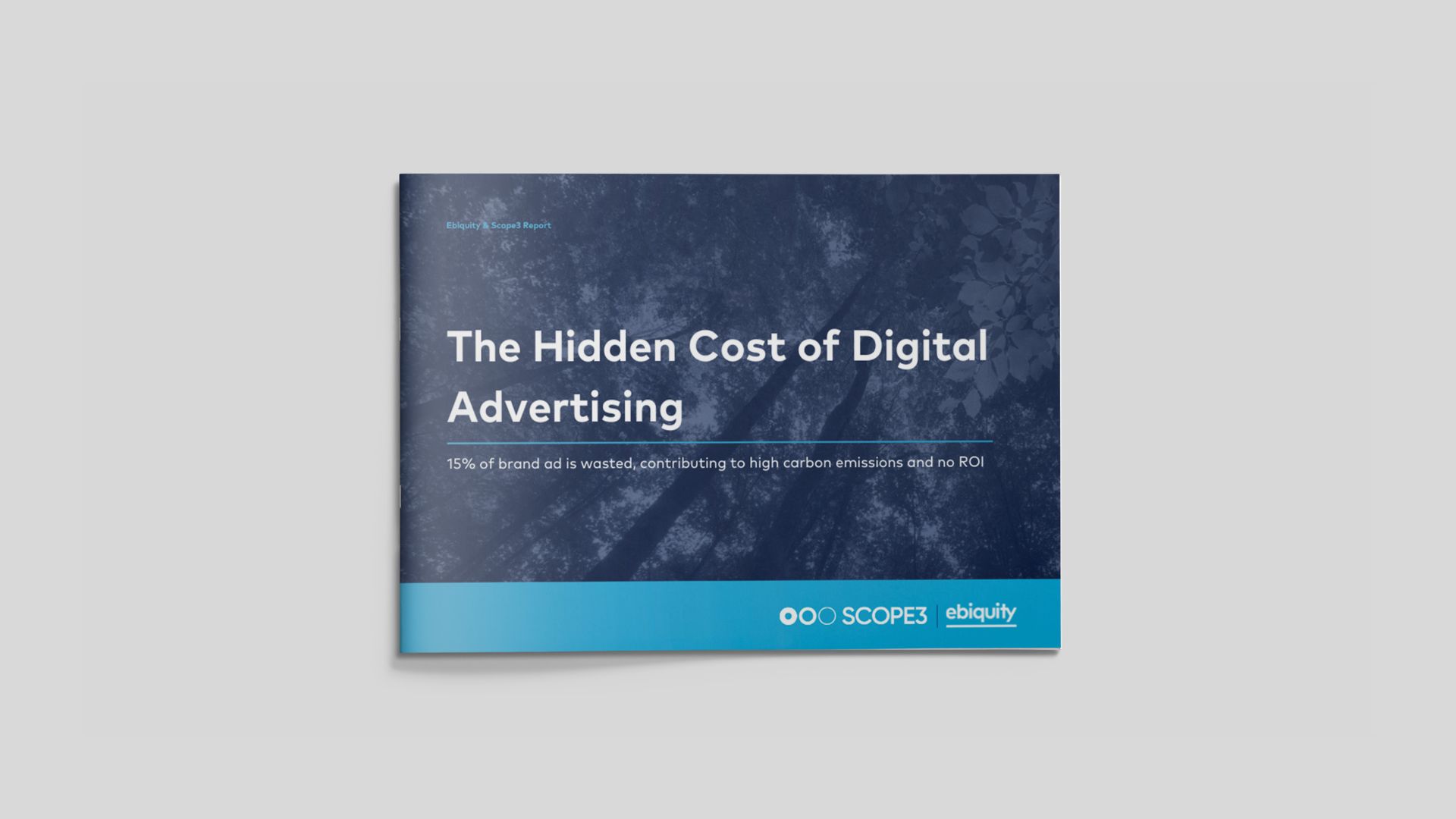As featured on The Wall Street Journal, read here.
“This study demonstrates that the advertising industry is now able to quantify CO2 emissions across websites, markets and categories of media.”
Ebiquity and Scope3 have released a new report exposing the extraordinary cost of excessive supply chain waste in digital advertising and its impact on the environment.

Ebiquity and Scope3 analysed more than $375M of digital advertising spend across 116bn display ad impressions from 43 brand advertisers and revealed that 15.3% of their advertising spend is wasted on inventory that generates no value to their business while generating excessive amounts of CO2 emissions.
The report also marks the first time that Scope3 has released global industry benchmarks using its carbon emissions measurement data, providing brands a baseline for comparison and understanding of the relative performance and cost of carbon associated with their advertising investments.
Ebiquity and Scope3 today released a new report exposing the extraordinary cost of excessive supply chain waste in digital advertising and its impact on the environment Key findings from the study include:
“Being able to put real numbers against the carbon emissions of digital advertising is just the beginning of a long journey to driving real change across the industry,” said Brian O’Kelley, CEO of Scope3. “These metrics highlight that all digital advertising isn’t equal. The wide range of emissions presents a clear opportunity for the industry to make better decisions. Brands now have a guide for what to look for and how they can begin to think about reduction and optimization for more effective and carbon-neutral advertising.”
“This study demonstrates that the advertising industry is now able to quantify CO2 emissions across websites, markets and categories of media. We believe CO2PM should be adopted immediately as a core metric to influence decision-making and lead technology and media partners to optimise for sustainability,” said Nick Waters, Group CEO at Ebiquity Plc. “The most striking insight is that brands in the sample spent 15.3% of their budget on Made For Advertising inventory which has no value.”
Waters continued, “Instead, this money could have been invested on high quality news websites, delivering high ad effectiveness in a brand safe environment, whilst supporting quality journalism, and emitting less than half of the CO2e. By acting together, we can reduce the harmful impact our industry has on the planet.”
Equip yourself with the data, benchmarks, and strategic insights needed to navigate the evolving advertising landscape.
Newsletter
Subscribe to our newsletter for exclusive insights, industry trends, and creative inspiration straight to your inbox!
Copyright © 2025 Ebiquity Plc. All Rights Reserved.